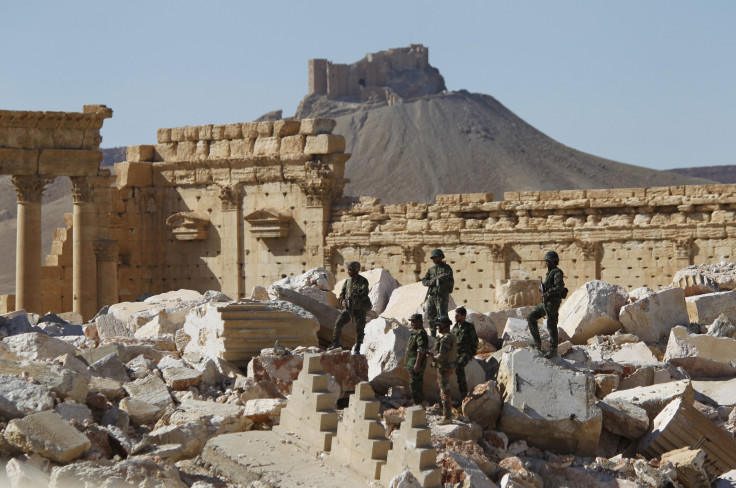Palmyra Ruins: After Latest ISIS Battle, Unesco World Heritage Site In Syria In Better Shape Than Expected

The ancient ruins of Palmyra, Syria, have passed from the Islamic State group to the Syrian army for the second time this year after two months of battle led by Russian warplanes. The latest victory comes after Syrian and Iranian forces began operations inside Palmyra Thursday, prompting ISIS to flee the city known for its Unesco World Heritage Site.
"With backing from the Syrian and Russian air forces, units of our armed forces recaptured the city of Palmyra, in cooperation with the allies," the military said in a statement. Syrian forces then took steps to clear land mines from the city.
ISIS was driven out of Palmyra by Syrian forces in early 2016 only to claim the historic site again in December. Before ISIS was pushed out of the city in March, the militant group destroyed some of Palmyra's historical ruins. It later destroyed more priceless archaeological heritage after taking back the city in December. ISIS has said it destroyed the ancient site, including Palmyra's Roman-era theater and the adjoining Tetrapylon - a set of four monuments with four columns leading to the theater, because they were monuments to idolatry.
Maamoun Abdu-Karim,head of the Antiquities and Museums Department in Syria, said ISIS was less destructive during its second run at controlling Palmyra. "We had expected the worst. However, the damage, according to the available photos, appears limited," he said.
The Syrian victory marked the latest instance where ISIS has lost territory in recent months as international forces fighting in Syria have pushed the group from its former territory in the north. Palmyra is strategically important to both sides because it is located only 140 miles from Raqqa, ISIS' headquarters in Syria.
The battle also came as Syrian President Bashar Assad is hoping to convince global leaders to let him stay in power after a five-year civil war that has fueled the rise of ISIS terror attacks across the world and a mass migrant crisis in the Middle East and Europe. During peace talks in Geneva this week led by the United Nations, the Syrian government's chief negotiator highlighted Assad's promise to retake Palmyra.
Syrian opposition forces fighting to unseat Assad, however, have warned that ISIS could retake the city for a third time.
Palmyra was a global tourist attraction before the civil war began in 2011. It attracted tens of thousands of visitors each year.
The site was placed under the protection of the United Nations in 2009. The United NationsEducational, Scientific and Cultural Organization describes the site: "An oasis in the Syrian desert, north-east of Damascus, Palmyra contains the monumental ruins of a great city that was one of the most important cultural centers of the ancient world. From the 1st to the 2nd century, the art and architecture of Palmyra, standing at the crossroads of several civilizations, married Graeco-Roman techniques with local traditions and Persian influences."
© Copyright IBTimes 2024. All rights reserved.












